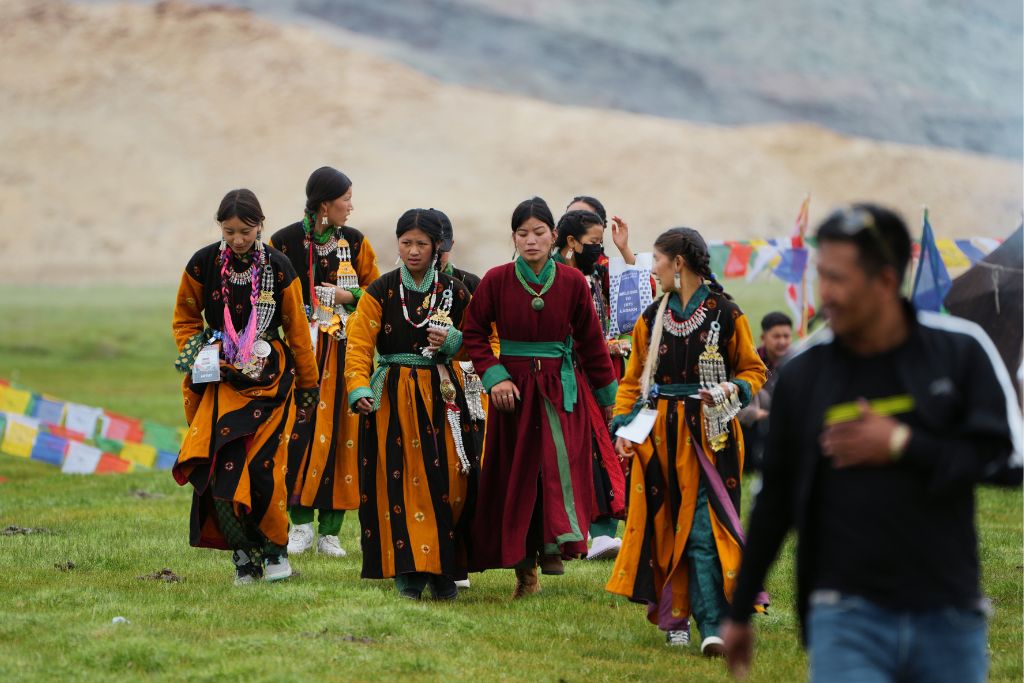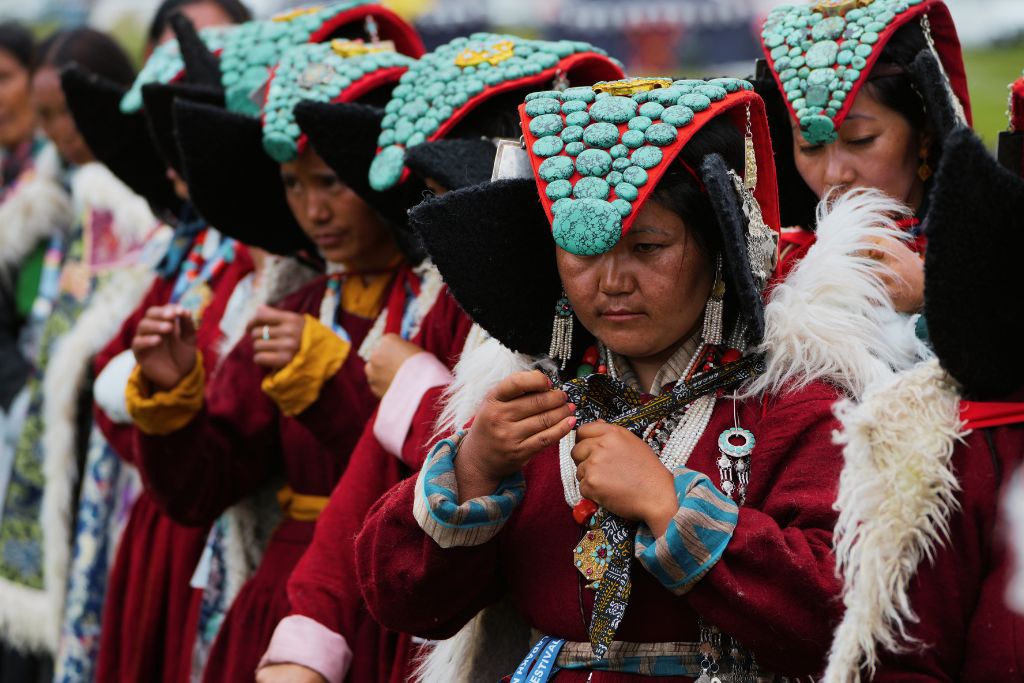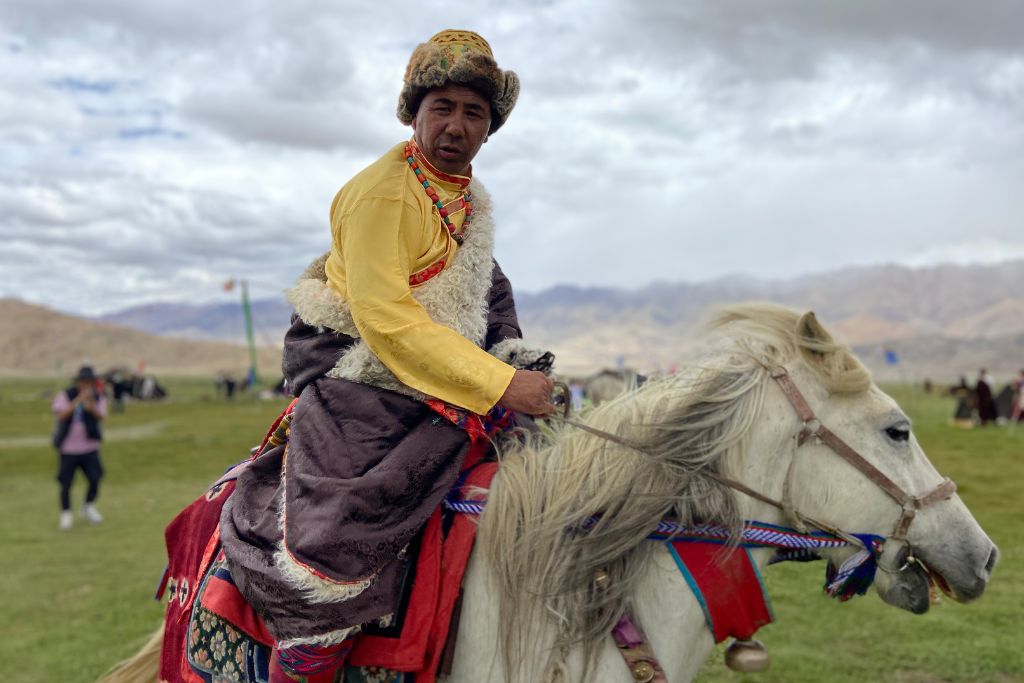
Here’s all that happened at Ladakh Nomadic Festival
The Ladakh Nomadic Festival's third edition in Hanle village was a vibrant carnival attended by locals and tourists alike. The two-day event showcased traditional dances, folk songs, cultural performances, indigenous sports, and more.
Celebrating the distinct culture of the Changpa tribe, the Ladakh Nomadic Festival highlights their unique heritage that sets them apart from the broader Ladakh community. Organised by the Cultural Academy of Leh, with support from the Ladakh Autonomous Hill Development Council and the Union Territory of Ladakh, the event aims to sustain and rejuvenate their traditional way of life.
The women of the Changpa tribe wear elaborate beautiful turquoise headdresses, locally called perak, and traditional capes called lokpa, as they await their turn for a cultural performance. The event featured about 1,200 participants from the Jangthang region competing in traditional folk dance and song categories.
Also Read | Festivals in India: What’s behind the masks in Leh’s Hemis Festival?
Members of the Changpa tribe rear livestock, and shift from one pasture to another. The festival witnesses active participation of not only the local population and tourists but also around 800 yaks and 15,000 other domestic animals, enhancing the event’s vibrancy.
Also Read | Once a ‘burden’, double-humped camel is a prized animal in Ladakh today
Demonstrating indigenous techniques, a Changpa tribe member crafts woollen yarn. Despite enduring harsh climate conditions, the tribe earns significant revenue for the region with their sales of wool from Pashmina goats, sheep and yaks.
Nomadic culture permeates food, shelter, clothing and lifestyle. On back-strap looms, people of the region intricately weave items ranging from shoelaces to blankets. Seen here, a nomad weaving a traditional carpet using yak wool.
Also Read | First musical band of high-altitude Ladakh riding high
Each Changpa nomad’s tent features a meticulously maintained altar, positioned higher than the sitting level. Adorned with images of Buddha and the Dalai Lama, the Tibetan-style altar is illuminated by flickering butter lamps.
Horses serve as modes of transport when camps are shifted from one place to another. The nomadic tradition includes skilled horse riding and racing.
Tibetan nomads are often burdened with the thought of the uncertain fate of their traditional way of life. It’s feared that the heritage, housed in the Jangthang plains, may be lost within a decade. Seen here, an elderly woman wearing the ethnic dress from western Tibet.
Also Read | Ladakh mother carves Tibetan legacy on stone
Tibetan nomadic girls attend the festival dressed in all their finery. They apply jaggery-based paste on their face to protect their skin from the harmful UV rays of the sun.
Also Read | Ladakh’s Chipko: Mothers out on streets to save ‘sacred’ juniper trees
As many as 182 nomadic tents are pitched during the festival to showcase the life of the nomads and host a market. This effort preserves the Changpa culture and reconnects participants with their heritage. It’s an immersive experience for attendees, creating lasting memories.
Also Read | Ladakh longs for tourists who give region a miss
The lead image at the top shows young women from the Changpa tribe attending the Ladakh Nomadic Festival.
Photos and text by Dawa Dolma, she is a freelance journalist based in Leh. She writes about climate change, communities, and culture of the Himalayas and she is a Rural Media Fellow 2022 at Youth Hub, Village Square.








